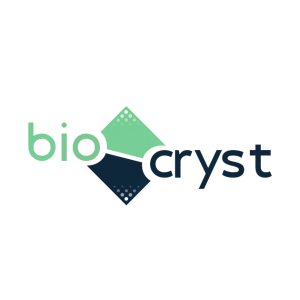BioCryst Presents New Data Demonstrating Consistently Low Attack Rates Among HAE Patients After Switching to ORLADEYO® (berotralstat)
Rhea-AI Summary
BioCryst Pharmaceuticals (Nasdaq: BCRX) announced promising long-term efficacy and safety results for ORLADEYO (berotralstat) in treating hereditary angioedema (HAE). Data from the APeX-2 and APeX-S clinical trials highlight sustained reductions in HAE attack rates and improved quality of life. Notably, patients switching from injectable therapies reported 98 percent attack-free days. Presenting at the EAACI Congress 2022, these findings bolster ORLADEYO's position as a preferred oral prophylactic therapy for HAE.
Positive
- 98% attack-free days in patients switching from injectable therapy to ORLADEYO.
- Sustained reductions in HAE attack rates observed across all patient groups.
- Improvements in quality of life metrics as indicated by significant AE-QoL scores.
- ORLADEYO was safe and well-tolerated, no drug-related serious adverse events reported.
Negative
- None.
News Market Reaction 1 Alert
On the day this news was published, BCRX gained 2.46%, reflecting a moderate positive market reaction.
Data tracked by StockTitan Argus on the day of publication.
—Analysis from APeX-S showed 98 percent attack-free days during treatment with ORLADEYO after switching from an injectable therapy—
RESEARCH TRIANGLE PARK, N.C., July 01, 2022 (GLOBE NEWSWIRE) -- BioCryst Pharmaceuticals, Inc. (Nasdaq: BCRX) today announced new long-term efficacy and safety data from the APeX-2 and APeX-S clinical trials evaluating oral, once-daily ORLADEYO® (berotralstat) for the prophylactic treatment of hereditary angioedema (HAE) showing sustained reductions in attack rates and improvement in quality of life (QoL) among patients living with HAE, and improved management of symptoms after switching to ORLADEYO from an injectable long-term prophylactic treatment (LTP).
The data are being presented in Flash Talks at the European Academy of Allergy and Clinical Immunology (EAACI) Hybrid Congress 2022, which is being held live in Prague, Czech Republic, and virtually, from July 1-3, 2022.
“From each additional analysis of our long-term data from APeX-2 and APeX-S, we continue to see more examples of the positive long-term impact our oral, once-daily prophylactic therapy is having on patients with HAE. Since first reporting our 96-week data at last year’s EAACI congress, we have seen increased evidence of sustained improvement in quality of life, reductions in attack rates and decreased need for use of injectable on-demand therapy. These data, coupled with the real-world evidence and feedback we are gathering from patients and physicians, confirm our confidence in ORLADEYO as a meaningful treatment option for patients with HAE,” said Dr. William Sheridan, chief medical officer of BioCryst.
“The analysis of the attack-free status of patients with HAE who switched from injectable LTP therapy to ORLADEYO in APeX-S builds on previous data that have shown consistently low attack rates in ORLADEYO patients. These findings suggest there are excellent reasons for patients to speak with their physicians to determine if switching to an oral prophylactic therapy could be an option to help them reduce their burden of disease while maintaining strong efficacy. Additionally, the analysis from APeX-2 of long-term efficacy and quality of life data following initiation of the 150 mg dose demonstrates ORLADEYO is having a positive impact on patients as they focus on their daily activities,” said Teresa Caballero, M.D., Ph.D., Allergy Department, Hospital Universitario La Paz, Madrid, Spain.
BioCryst EAACI 2022 Presentation Highlights
APeX-S was an open-label, international study that evaluated safety and tolerability of ORLADEYO 110 mg and 150 mg in HAE patients. In APeX-S, the switch from LTP (lanadelumab) to ORLADEYO was generally well-tolerated among patients, with no patients in this analysis discontinuing ORLADEYO due to an adverse event.
- Attack-free Status in Patients who Switched from Subcutaneous Lanadelumab to Oral Berotralstat (Poster #311); FT 3 – Flash Talks on hereditary angioedema; Friday, July 1, 2022; 11:15am-12:45pm CET; Room D7
- This analysis assessed the attack-free status in all patients who switched from lanadelumab to ORLADEYO 150 mg at U.S. sites (n=21).
- Consistently low attack rates were observed in these patients, with median attack rates following the switch to ORLADEYO monotherapy of 0.0 throughout 12 months of treatment with ORLADEYO. The mean (SEM) monthly attack rate after Month 1 was 0.1 (0.08), which was sustained through Month 6 (0.5 [0.24]) and Month 12 (0.2 [0.15]).
- Patients remained attack free an average of 98 percent of days during treatment with ORLADEYO, with a mean (SEM) of 144 (23.7) days and a maximum duration of 411 days between attacks.
- These data demonstrate that ORLADEYO is effective at maintaining good control of HAE symptoms in patients who switch from subcutaneous LTP treatments such as lanadelumab.
APeX-2 included 121 HAE patients who were randomized 1:1:1 to ORLADEYO 110 mg or 150 mg, or placebo, once daily for 24 weeks (part 1 of the study). At Week 24, patients on ORLADEYO continued on the same dose and placebo patients were re-randomized to ORLADEYO 110 mg or 150 mg for another 24 weeks (part 2 of the study). At Week 48 and thereafter, all patients continued on ORLADEYO 150 mg (open-label phase). In APeX-2, ORLADEYO was safe and generally well tolerated, with no drug-related serious adverse events reported.
- Improvement in Quality of Life and Hereditary Angioedema (HAE) Attack Rates Observed in Patients Treated with Long-term Berotralstat in the APeX-2 Study; Poster #312; FT 3 – Flash Talks on hereditary angioedema; Friday, July 1, 2022; 11:15am-12:45pm CET; Room D7
- This analysis stratified patients who remained on study through at least Week 96 into three groups according to their duration of treatment with ORLADEYO 150 mg: patients who received ORLADEYO 150 mg for 96 weeks (n=21), patients who received ORLADEYO 110 mg or placebo for part 1, ORLADEYO 110 mg for part 2 and 150 mg for part 3 (n=37), and patients who received placebo for part 1 and ORLADEYO 150 mg for parts 2 and 3 (n=12). Quality of life (QoL) was assessed using the Angioedema Quality of Life Questionnaire (AE-QoL), a validated tool to measure QoL impairment in patients with recurrent angioedema. The minimal clinically important difference (MCID) was defined as a change of six points in total score.
- A sustained reduction in HAE attack rates was observed across all three groups, as patients treated with ORLADEYO 150 mg had median attack rates of 0.0 in 21 of 24 months of treatment following initiation of the 150 mg dose. Patients also reported an overall improvement in their QoL, with the largest improvement observed in the functioning domain. For total AE-QoL score, a mean improvement (SEM) of 16.4 (2.79) points from baseline to Week 96 was observed, suggesting ORLADEYO had a positive impact on day-to-day activities.
- These data further demonstrate that ORLADEYO is generally well tolerated and an effective prophylactic therapy that reduces attack rates and improves QoL in patients with HAE.
- This analysis stratified patients who remained on study through at least Week 96 into three groups according to their duration of treatment with ORLADEYO 150 mg: patients who received ORLADEYO 150 mg for 96 weeks (n=21), patients who received ORLADEYO 110 mg or placebo for part 1, ORLADEYO 110 mg for part 2 and 150 mg for part 3 (n=37), and patients who received placebo for part 1 and ORLADEYO 150 mg for parts 2 and 3 (n=12). Quality of life (QoL) was assessed using the Angioedema Quality of Life Questionnaire (AE-QoL), a validated tool to measure QoL impairment in patients with recurrent angioedema. The minimal clinically important difference (MCID) was defined as a change of six points in total score.
- 96 Weeks of Treatment with Berotralstat Consistently Decreases the Use of Injectable On-Demand Medication to Treat Hereditary Angioedema (HAE) Attacks: Analysis from APeX-2; Poster #313; FT 24 – Flash Talks on urticaria and angioedema II; Sunday, July 3, 2022; 5:15-6:45pm CET; Room D6
- This analysis assessed injectable on-demand medication use in patients who were originally randomized to ORLADEYO 150 mg and completed 96 weeks of therapy (n=21).
- Overall, 96 weeks of treatment with ORLADEYO 150 mg resulted in 2.4 fewer doses per month of injectable on-demand therapy at Week 96 as compared to baseline. The median number of attacks per month requiring treatment with injectable on-demand medication was 0.0 attacks at all post-baseline timepoints throughout the 96 weeks of treatment, and a similar trend was observed with mean attack rates.
- These data suggest that use of ORLADEYO leads to an increase in needle-free days for patients with HAE due to the reduced need for use of injectable on-demand medication.
- This analysis assessed injectable on-demand medication use in patients who were originally randomized to ORLADEYO 150 mg and completed 96 weeks of therapy (n=21).
ORLADEYO was safe and well tolerated in clinical trials. The most frequently reported adverse reactions in patients receiving ORLADEYO compared with placebo were back pain and gastrointestinal reactions. The gastrointestinal reactions generally occurred early after initiation of treatment with ORLADEYO, became less frequent with time and typically self-resolved.
About ORLADEYO® (berotralstat)
ORLADEYO® (berotralstat) is the first and only oral therapy designed specifically to prevent attacks of hereditary angioedema (HAE) in adult and pediatric patients 12 years and older. One capsule of ORLADEYO per day works to prevent HAE attacks by decreasing the activity of plasma kallikrein.
U.S. Indication and Important Safety Information
INDICATION
ORLADEYO® (berotralstat) is a plasma kallikrein inhibitor indicated for prophylaxis to prevent attacks of hereditary angioedema (HAE) in adults and pediatric patients 12 years and older.
Limitations of use
The safety and effectiveness of ORLADEYO for the treatment of acute HAE attacks have not been established. ORLADEYO should not be used for the treatment of acute HAE attacks. Additional doses or dosages of ORLADEYO higher than 150 mg once daily are not recommended due to the potential for QT prolongation.
IMPORTANT SAFETY INFORMATION
An increase in QT prolongation was observed at dosages higher than the recommended 150 mg once-daily dosage and was concentration dependent.
The most common adverse reactions (≥
A reduced dosage of 110 mg taken orally once daily with food is recommended in patients with moderate or severe hepatic impairment (Child-Pugh B or C) and in patients taking chronically administered P-glycoprotein (P-gp) or breast cancer resistance protein (BCRP) inhibitors (eg, cyclosporine).
Berotralstat is a substrate of P-gp and BCRP. P-gp inducers (eg, rifampin, St. John’s wort) may decrease berotralstat plasma concentration, leading to reduced efficacy of ORLADEYO. The use of P-gp inducers is not recommended with ORLADEYO.
ORLADEYO at a dose of 150 mg is a moderate inhibitor of CYP2D6 and CYP3A4. For concomitant medications with a narrow therapeutic index that are predominantly metabolized by CYP2D6 or CYP3A4, appropriate monitoring and dose titration is recommended. ORLADEYO at a dose of 300 mg is a P-gp inhibitor. Appropriate monitoring and dose titration is recommended for P-gp substrates (eg, digoxin) when coadministering with ORLADEYO.
The safety and effectiveness of ORLADEYO in pediatric patients <12 years of age have not been established.
There are insufficient data available to inform drug-related risks with ORLADEYO use in pregnancy. There are no data on the presence of berotralstat in human milk, its effects on the breastfed infant, or its effects on milk production.
To report SUSPECTED ADVERSE REACTIONS, contact BioCryst Pharmaceuticals, Inc. at 1-833-633-2279 or FDA at 1-800-FDA-1088 or www.fda.gov/medwatch.
Please see full Prescribing Information.
About BioCryst Pharmaceuticals
BioCryst Pharmaceuticals discovers novel, oral, small-molecule medicines that treat rare diseases in which significant unmet medical needs exist and an enzyme plays a key role in the biological pathway of the disease. Oral, once-daily ORLADEYO® (berotralstat) is approved in the United States and multiple global markets. BioCryst has several ongoing development programs including BCX9930, an oral Factor D inhibitor for the treatment of complement-mediated diseases, BCX9250, an ALK-2 inhibitor for the treatment of fibrodysplasia ossificans progressiva, and galidesivir, a potential treatment for Marburg virus disease and yellow fever. RAPIVAB® (peramivir injection) is approved in the U.S. and multiple global markets, with post-marketing commitments ongoing. For more information, please visit the company’s website at www.biocryst.com.
Forward-Looking Statements
This press release contains forward-looking statements, including statements regarding future results, performance or achievements. These statements involve known and unknown risks, uncertainties and other factors which may cause actual results, performance or achievements to be materially different from any future results, performance or achievements expressed or implied by the forward-looking statements. These statements reflect our current views with respect to future events and are based on assumptions and are subject to risks and uncertainties. Given these uncertainties, you should not place undue reliance on these forward-looking statements. Some of the factors that could affect the forward-looking statements contained herein include: the ongoing COVID-19 pandemic, which could create challenges in all aspects of BioCryst’s business, including without limitation delays, stoppages, difficulties and increased expenses with respect to BioCryst’s and its partners’ development, regulatory processes and supply chains, negatively impact BioCryst’s ability to access the capital or credit markets to finance its operations, or have the effect of heightening many of the risks described below or in the documents BioCryst periodically files with the Securities and Exchange Commission; BioCryst’s ability to successfully implement its commercialization plans for, and to commercialize, ORLADEYO, which could take longer or be more expensive than planned; the commercial viability of ORLADEYO, including its ability to achieve market acceptance; the FDA or other applicable regulatory agency may require additional studies beyond the studies planned for products and product candidates, may not provide regulatory clearances which may result in delay of planned clinical trials, may impose certain restrictions, warnings, or other requirements on products and product candidates, may impose a clinical hold with respect to product candidates, or may withhold, delay, or withdraw market approval for products and product candidates; BioCryst’s ability to successfully manage its growth and compete effectively; risks related to the international expansion of BioCryst’s business; and actual financial results may not be consistent with expectations, including that revenue, operating expenses and cash usage may not be within management's expected ranges. Please refer to the documents BioCryst files periodically with the Securities and Exchange Commission, specifically BioCryst’s most recent Annual Report on Form 10-K, Quarterly Reports on Form 10-Q, and Current Reports on Form 8-K, which identify important factors that could cause the actual results to differ materially from those contained in BioCryst’s forward-looking statements.
BCRXW
Investor Contact:
John Bluth
+1 919 859 7910
jbluth@biocryst.com
Media Contact:
Catherine Collier Kyroulis
+1 917 886 5586
ckyroulis@biocryst.com








